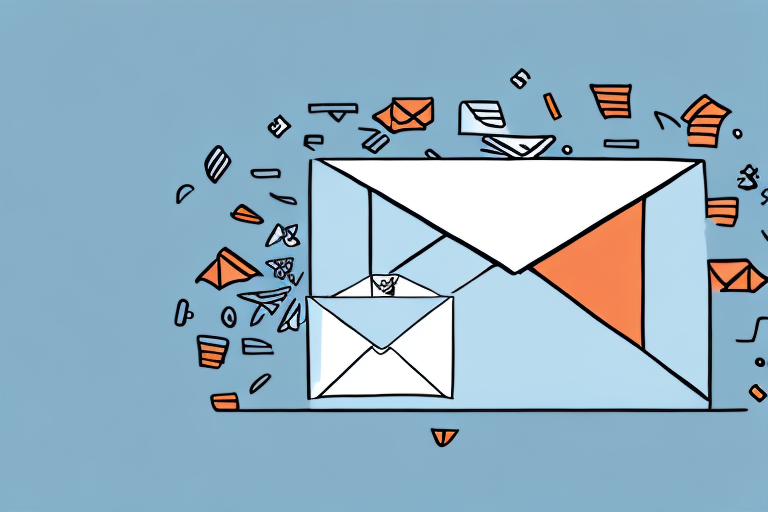Unlocking the Benefits of Mail Innovations for Your Business
In today's digital age, it's easy to overlook the power and potential of traditional mail marketing. However, recent mail innovations have made it easier than ever for businesses of all sizes to stand out in a crowded marketplace and drive results. From personalization to creative design and interactive elements, there are numerous ways that mail can help you connect with potential and existing customers. In this article, we'll explore the top benefits of mail innovations for your business and provide actionable tips for maximizing their impact.
Why Traditional Mail Marketing Still Matters
Despite the rise of digital marketing channels, traditional mail remains an important part of the marketing mix for many businesses. According to a 2023 direct mail survey, direct mail can drive higher response rates, with an average response rate of 5.1% compared to 0.6% for email. This is because mail has the ability to cut through the clutter and grab the attention of potential customers in a way that digital channels can't always do. It's tangible, physical, and creates a lasting impression that digital ads and emails simply can't replicate.
- Higher Response Rates: Tangible mail pieces engage recipients more effectively.
- Targeted Approach: Personalized messaging tailored to specific demographics.
- Cost-Effective: Lower printing and postage costs compared to some digital ads.
Additionally, traditional mail marketing allows for a more targeted approach. With the use of mailing lists and personalized messaging, businesses can tailor their mail campaigns to specific demographics and interests. This level of personalization can lead to higher conversion rates and a stronger connection with customers.
Mail Innovations to Stand Out
Mail innovations, such as personalization and creative design, can help your business stand out even more in a crowded marketplace. By tailoring your mail pieces to individual recipients or using eye-catching design elements, you can capture their attention and increase the likelihood that they'll engage with your brand. Interactive elements, like augmented reality or QR codes, can also create a memorable experience for the recipient and drive engagement.
Personalization Techniques
Leveraging customer data to personalize mail content can significantly enhance engagement. Techniques include:
- Variable data printing for customized messages.
- Segmented mailing lists based on customer behavior.
- Personalized offers and incentives.
Interactive Elements
Incorporating interactive elements makes your mail pieces more engaging:
- QR Codes leading to exclusive online content.
- Augmented Reality features that bring designs to life.
- Personalized URLs (PURLs) for targeted landing pages.
Additionally, integrating sustainability into your mail campaigns by using eco-friendly materials and printing processes can appeal to environmentally conscious consumers, showcasing your commitment to reducing your carbon footprint.
Top Mail Innovations for Small Businesses
For small businesses, adopting the right mail innovations can make a significant impact without breaking the budget. Key innovations to consider include:
Personalized Content
Using customer data to create personalized mail pieces can enhance relevance and engagement. Tools like ShipScience's personalization tools enable small businesses to customize content efficiently.
Augmented Reality (AR)
AR technology allows businesses to create interactive mail pieces that can be scanned with a smartphone or tablet. This can be used to showcase products, provide additional information, or offer virtual try-ons, creating a unique and memorable experience.
Data-Driven Targeting
Utilizing data analytics to target specific customer segments ensures that your mail campaigns reach the most relevant audience, increasing the likelihood of conversions.
- Segmenting audiences based on purchasing behavior.
- Targeting specific demographics with tailored offers.
- Using predictive analytics to forecast customer needs.
Cost-Effective Benefits of Direct Mail Advertising
Direct mail can be a cost-effective marketing strategy, especially when compared to certain digital channels. The average cost per response for direct mail is notably lower, making it an attractive option for businesses looking to maximize their marketing budget.
Measuring Impact
To measure the effectiveness of your direct mail campaigns, consider tracking the following metrics:
- Response Rates: The percentage of recipients who respond to the mail piece.
- Conversion Rates: The percentage of responses that lead to a desired action, such as a purchase.
- ROI: Return on investment calculated by comparing the cost of the campaign to the revenue generated.
Utilizing tools like personalized URLs or unique offer codes can help track these metrics accurately, allowing for continuous optimization of your campaigns.
The Importance of Personalization in Mail Marketing
Personalization is a critical component of successful mail marketing campaigns. By tailoring your content and offers to individual recipients, you can create a more meaningful and impactful experience. Strategies to achieve personalization include:
- Using customer data to inform content creation.
- Segmenting your audience based on specific criteria.
- Applying variable data printing for customized mail pieces.
Enhanced Engagement
When recipients feel that the content is specifically tailored to them, engagement levels rise. Personalized mail pieces can lead to:
- Higher open rates.
- Increased click-through rates.
- Greater conversion and sales.
Interactive Personalization
Incorporating interactive elements like PURLs or QR codes not only personalizes the experience but also provides valuable data on customer behavior and preferences.
Integrating Direct Mail with Other Marketing Channels
For maximum impact, direct mail should be integrated with other marketing channels such as email and social media. A multi-channel approach ensures consistent messaging and reinforces your brand across various touchpoints.
Consistent Messaging
Ensure that your messaging is consistent across all channels to create a unified brand experience. For example, a direct mail campaign can complement an email campaign by reinforcing the same offers and calls-to-action.
Extended Reach
Digital channels can help extend the reach of your direct mail campaigns. Social media can be used to complement mail by sharing highlights or encouraging recipients to engage online.
Data Integration
Integrating data from various channels provides a comprehensive view of customer behavior, enabling more informed decision-making and more effective marketing strategies.
Best Practices for Designing Effective Direct Mail Pieces
Designing effective direct mail pieces involves several best practices to ensure they capture attention and drive action:
Clear Call-to-Action (CTA)
Your mail piece should have a concise and compelling CTA that directs recipients on the next steps to take, whether it's visiting a website, making a purchase, or contacting your business.
Visual Appeal
Use high-quality images and graphics to make your mail piece visually appealing. A clear hierarchy of information helps guide the reader's eye through the content.
Balance of Text and Images
A balanced use of text and images ensures that your message is conveyed effectively without overwhelming the recipient.
Personalization and Targeting
Incorporate personalized content and target specific customer segments to increase relevance and engagement.
Optimal Timing and Frequency
Find the right balance in the timing and frequency of your mailings to avoid fatigue while keeping your brand top-of-mind.
Maximizing ROI on Direct Mail Campaigns
To maximize your return on investment (ROI) for direct mail campaigns, implement the following strategies:
- Target Specific Segments: Focus on customer segments that are most likely to respond.
- Personalized Content: Create tailored messages that resonate with each recipient.
- Cost-Effective Production: Optimize printing and postage costs without compromising quality.
- Metrics Tracking: Continuously track and analyze key metrics to refine your campaigns.
- Multi-Channel Integration: Combine direct mail with other marketing channels for a cohesive strategy.
By taking a strategic approach to planning and execution, you can enhance the effectiveness of your direct mail campaigns and achieve a higher ROI.
Navigating the Postal Service: Delivery Times and Costs
Understanding the postal service, including costs and delivery times for different types of mail, is essential for planning successful direct mail campaigns. Key factors to consider include:
Mail Classes
Different classes of mail offer varying delivery times and cost structures:
- First-Class Mail: Fast delivery with higher costs, ideal for time-sensitive campaigns.
- Standard Mail: More economical with longer delivery times, suitable for broader outreach.
- Nonprofit Mail: Discounted rates for qualifying organizations.
Cost Factors
Costs are influenced by factors such as the weight, size, and delivery location of your mail pieces. Utilizing ShipScience's postal rate calculators can help estimate expenses accurately.
Delivery Times
Delivery times vary based on mail class and geographic location. Planning your campaigns with these timelines ensures that your mail reaches recipients when intended.
Addressing Common Concerns About Direct Mail Marketing
Despite its benefits, direct mail marketing often faces concerns regarding cost, effectiveness, and relevance. Addressing these concerns is crucial for leveraging direct mail successfully:
Cost Concerns
While there are costs associated with printing and postage, direct mail can be cost-effective, especially when targeted properly and integrated with other channels to maximize impact.
Effectiveness
With proper personalization and targeted strategies, direct mail can achieve high response rates and strong ROI, complementing digital efforts.
Relevance in the Digital Age
Direct mail provides a tangible experience that digital channels can't replicate, making it a valuable component of a comprehensive marketing strategy.
By addressing these concerns and implementing best practices, businesses can unlock the full potential of direct mail marketing.






















